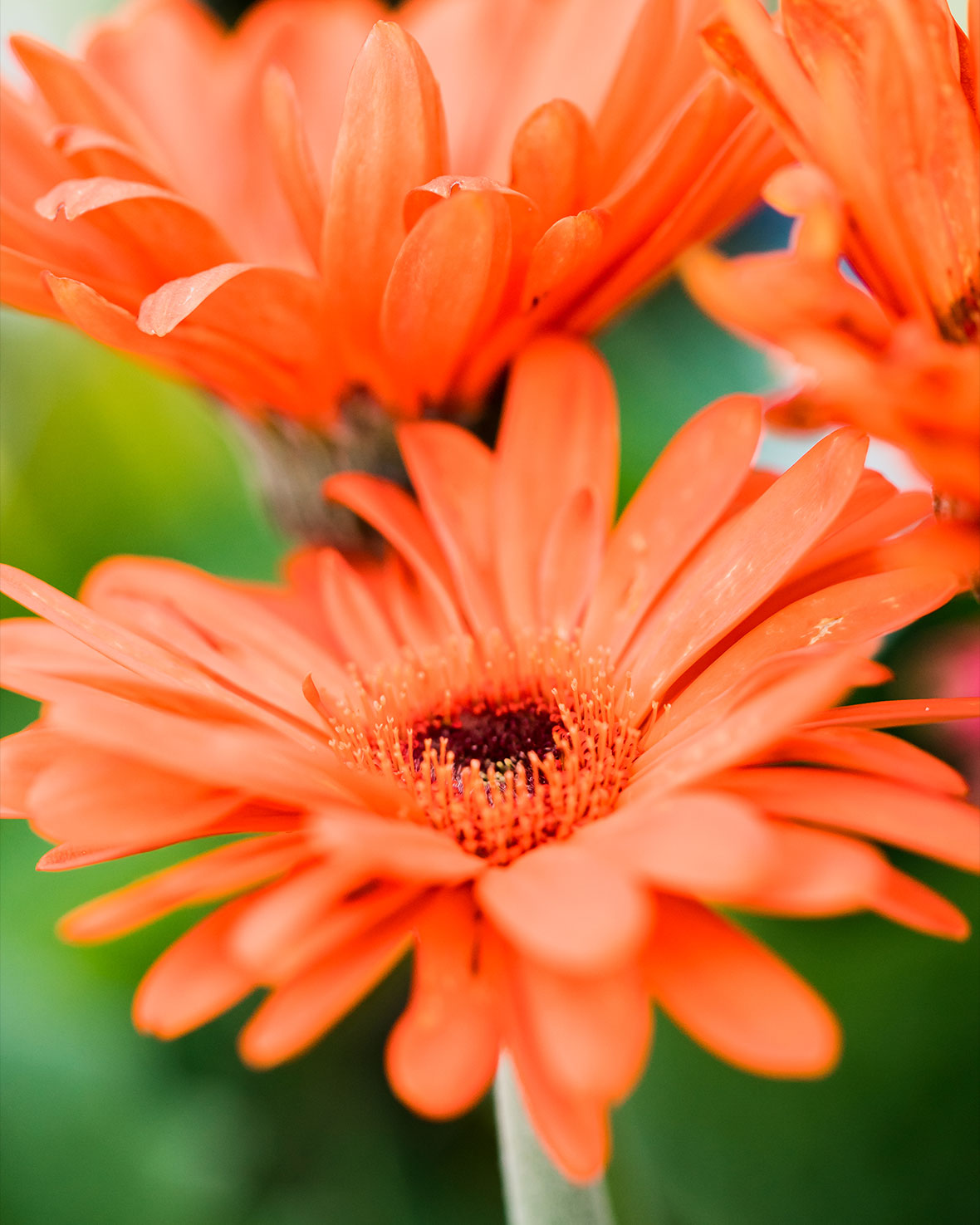Daisy-like flowers always look so cheery; it’s almost impossible not to feel just a little bit happier every time you look at one.
The daisy family (Asteraceae) is huge – there are almost 24,000 different species. It includes many garden favourites such as ageratums, asters, chrysanthemums, cosmos, dahlias, marigolds, sunflowers, zinnias and gerberas.

Gerberas occur naturally over a wide area through tropical Africa, Asia and South America. They are the fifth most important flower in the international cut flower industry, after roses, carnations, chrysanthemums and tulips.
The gerberas we mostly know are a cross between two South African species, Gerbera jamesonii and Gerbera viridifolia. This cross is known as Gerbera hybrida, and there are thousands of cultivars.
The leaves are long and slender, about 15cm long, and form a low mounding clump. They have many lobes and are soft and often a bit furry.
The flowers are held on tall, leafless, hollow stems above the foliage. They may be white, yellow, orange, red or pink, or bi-coloured, and may be single or double. The centre of the flower may be the same colour as the petals, or a contrasting colour; sometimes it is black. The new hybrid forms may produce up to 6 blooms at any time, so they are pretty special.
Gerberas are a perennial, so they will grow in the ground for years. But they are also a fabulous pot plant, great for indoors or patios, and you might just like to treat them as a long-lasting bunch of flowers, keeping them for a few months and then replacing them.
Just pop the plastic pot inside a nice planter or container. There’s no need to repot. Place the plant in a bright spot, and water every few days, or when the top centimetre or so of the potting mix is dry. Water thoroughly, and then remove any water sitting in the bottom of the container. If the plant dries out, it will wilt, but it will recover if you water it thoroughly. If it gets this dry, you might like to re-hydrate the potting mix by sitting the pot in water for half an hour or so.
Gerberas are easy to grow, but they can be prone to fungal diseases, especially powdery mildew. The best way to avoid this is to make sure you water them in the morning, so that the foliage has time to dry off before evening. The lovely lady who grows our gerberas for our garden centre tells me to ‘never put them to bed wet’. If you do notice some white mildew on the leaves, remove the affected leaves immediately and put them in the bin. With care and vigilance, you shouldn’t have too much trouble. If the mildew spreads, it’s probably best to just dispose of the plant and replace it with a new one.
Gerberas have been proven to be one of the best plants for improving indoor air quality; they are particularly good at removing formaldehyde and benzene from the air. So they are good for your body as well as your soul.